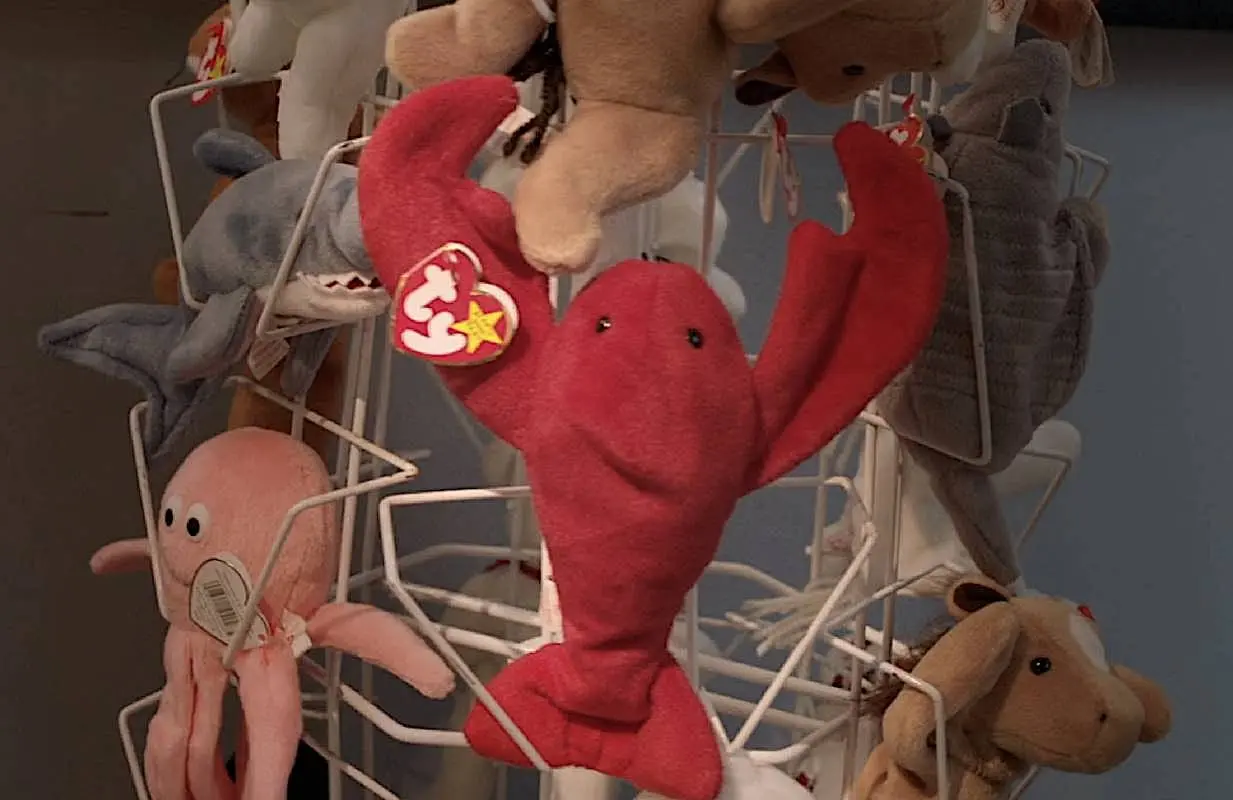Before Watching The Beanie Bubble, Get the Real Story From Beanie Mania
-
 Beanie Mania (Photo: Max)
Beanie Mania (Photo: Max)HBO Go, HBO Now, HBO Max, Max — the name may change, but the search for compelling new shows to watch remains the same. Primetimer is taking some of the guesswork out of the equation with our weekly feature To the Max, where we'll share recommendations for classic shows, underrated gems, and water-cooler series.
Beanie Babies creator Ty Warner made sure his name was literally attached to his product — the heart-shaped tag with “Ty” printed on it is part of what made the bean-stuffed animals instantly recognizable. And at the height of the Beanie Baby craze, an impeccable Ty tag made them all the more valuable. So it makes sense that Apple TV+’s The Beanie Bubble, premiering July 28, focuses on Warner (Zach Galifianakis) and his obsession with money, fame, and his own creation.
But judging by the trailer, this might not be the most accurate representation of the Beanie Babies story. For one, the real plush toys themselves don’t make an appearance, likely for legal reasons. Instead of a menagerie of different animals, Galifianakas’ Warner is the creator of popular stuffed Himalayan cats. And the movie is based on Zac Bissonnette’s book, The Great Beanie Baby Bubble: Mass Delusion and the Dark Side of Cute, which zeros in on Warner’s oddities and personal dramas, leaving out the people who actually sparked the phenomenon: suburban moms.
The 2021 Max documentary Beanie Mania tells the story of the Naperville, Illinois residents who, for a brief time, controlled the entire Beanie Babies market. Mary Beth Sobolewski, Becky Phillips, and Joni Hirsch Blackman lived in the Colorado Court cul-de-sac in the 1990s, when all their kids started collecting Beanie Babies. It was a big time for collecting, Sobolewski says in the film — her kids were already avid collectors of baseballs and even unsharpened pencils, so why not stuffed animals? And because the Chicago-based Ty corporation started out by only selling to small, local toy shops, it became like a “perennial scavenger hunt” built for those in the city’s suburbs, making it just as fun to discover a new animal in a store as it was to take them home and play with them.
What started as their children’s obsession soon became their own. These three moms began cataloging the Beanies they would see, creating binders full of spreadsheets, cross-checking with other neighbors and eventually the Ty corporation itself to see which animals existed that weren’t yet part of their collections, and which might be on the way soon. Phillips tells the Beanie Mania filmmaker Yemisi Brookes that she spent $2,000 in one month on her phone bill just calling Ty for updates on new Beanies coming to market.
By 1996, Ty started retiring certain Beanie Babies, making them all the more valuable, and it was ultimately these same women who determined the collectibles' prices. Sobolewski began publishing a magazine, Beanie World, which featured estimates for what certain Beanie Babies were worth, and that became the bible for the Beanie obsessed. Soon, the secondary market blew up, and it was no longer just collectors interested, but also speculators — one woman tells the story of flying to Hawaii to do an in-person hand-off of $20,000 worth of product.
The Ty corporation leaned into the popularity, of course. Lina Trivedi, the 12th ever employee of Ty, came up with the idea to add poems to the tags to make them more special and start a website to sell the toys and allow fans to communicate with each other via message boards, which fueled the worldwide craze. And of course, the company also raked in the cash from people instantly buying out products to either save as an “investment” or instantly resell to make a quick buck of their own. But without the Naperville moms, who knows if Warner would be the eccentric, reclusive billionaire he is today.
As we all know now, the Beanie Babies craze didn’t last forever, and when the bubble eventually burst, those women’s status in the Beanie Babies community became obsolete. But what Beanie Mania shows is that, for a brief moment, these normal moms were some of the most influential and powerful people in the world. Their reign wasn’t without some regrets — for instance, Sobolewski turned down a $100,000 offer for her entire collection, which soon after became worth much much less. But it also allowed them to be impressed and surprised by what they were capable of: creating a historic cultural phenomenon from the comfort of their small cul-de-sac.
Brianna Wellen is a TV Reporter at Primetimer who became obsessed with television when her parents let her stay up late to watch E.R.
TOPICS: Beanie Mania, Max, The Beanie Bubble, Yemisi Brookes, Zach Galifianakis